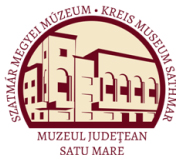Marta, Liviu: The Late Bronze Age Settlements of Petea-Csengersima (Satu Mare, 2009)
VI. Annexes
pot s 1 pot s 1 Ab 1 S33 Complex 8 (Fig. 8, 9) — A post hole (?) with quasi-circular outline (78 cm in diameter) was identified in the sterile soil in 46 cm depth. The walls were 26 cm high, inclined, and were fit with a small step in the western side. The base was flat; the fill was yellow-grey. No ceramic inventory. Not assigned to an archaeological culture. S33 Complex 9 (Fig. 8, 9) — A post hole (?) with circular outline (58 cm in diameter) occurred in 46 cm depth. The walls were inclined towards the inside. They were 13 cm high. The base was flat, the fill was yellow-grey with scattered fragments of charcoal and daub. No ceramic inventory. Not assigned to an archaeological culture. S33 Complex 10 (Fig. 8, 9) — A pit with circular outline. It had a prominent comer of 131 cm in diameter in the northern side. In the southern side, the walls were almost steep. They were 42 cm high. The base was slightly inclined in the north. The fill was yellow-grey. No ceramic inventory. Not assigned to an archaeological culture. 533 Complex 11 (Fig. 8, 9) — A pit was partially excavated on a surface with arched contour (82 x 106 cm). It was identified in the sterile soil in 43 cm depth. The walls were 27 cm deep and inclined towards the inside. The base was flat, the fill was yellow-grey with scattered fragments of daub. No ceramic inventory. Not assigned to an archaeological culture. Sector S34 (50 x 12 m, 600 m2, Fig. 11) 534 Complex 1 (Fig. 11, 13) — A storage v.essel with the upper part at the level of the cultural layer and the base in the sterile soil (PI. 38/2). Not assigned to an archaeological culture. S34 Complex 2 (Fig. 11, 13) — A pit laid on the margin of the sector and thus it was partially investigated. It occurred as an archaeological complex in the south-western corner of the trench (and in Complex 3). Another pit occurred in its corner after the first level was excavated. As a result, the complex was named complex 2a, and the pit in the corner, was named complex 2b. Inventory of both pits: 12 ceramic shards that originated from at least 5 vessels: 3 fragments of an amphora neck with wide, horizontal fluting and fragments of a bowl. S34 Complex 2a: A pit with amorphous outline (260 x 334 cm), whose walls were irregular and 20- 25 cm high. The base was irregular. The fill was dark-grey and contained much scattered daub. Inventory: 33 ceramic shards that originated from at least 9 vessels. One fragment, black on both sides (with burnished outside) had excised decoration. Date/culture: Suciu de Sus. Pottery shape Paste Decoration type Pottery type No. of elements Plate f IB 1-s AE 1 s EA 1 amphora s 1 amphora s GB 1 cup f 1 cup • f GE 1 dish s ,1 Ac 1 dish s 2Ad 1 p. cooking v.c 1 S34 Complex 2b: a pit occurred in the south-western comer of complex 2a. It had brown fill and black inclusions. The walls were irregular varying in inclination, They were 43 cm high. The base of the pit was irregular. Inventory: 38 ceramic shards that originated from at least 13 vessels. Two fragments that originated from two vessels had excised-incised decorations. Date/culture: Suciu de Sus. Pottery shape PasteDecoration type Pottery type No. of elements Plate cup f HB,MD 1 Aa 1 38/3 cup f 6 1 38/4 134
